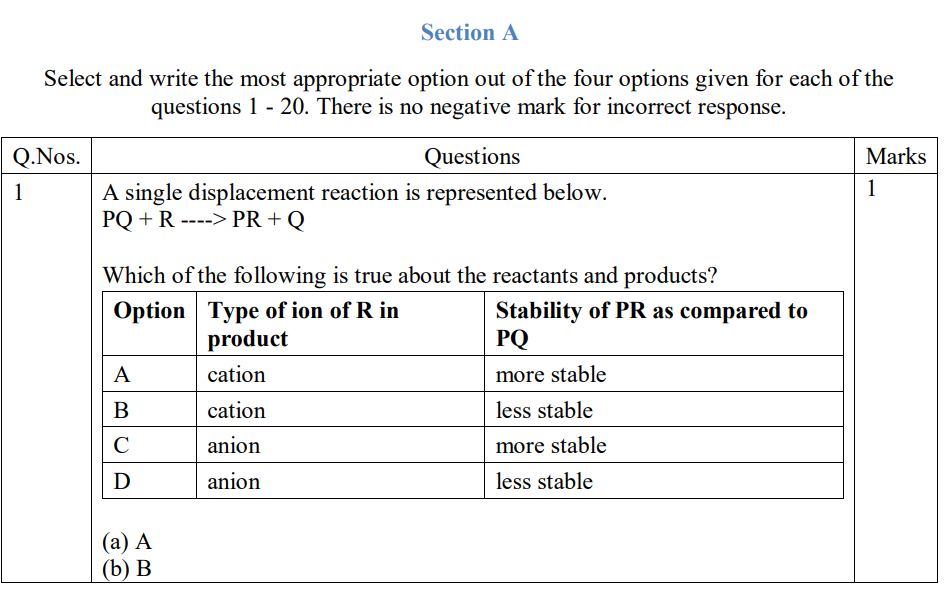CBSE Class 10 Answered
Explain the merits and demerits of the following:-
Dobereiner's law of traids
Newland's law of octaves
Mendeleev's periodic table
Modern periodic table.
Asked by Abhishek Chopra | 02 Mar, 2015, 06:34: PM
Dear Abhishek,
Please post one question at a time.
Answer to your first two queries are given below:
Dobereiner’s Triads
- In 1829, Johann Wolfgang Dobereiner arranged elements with similar properties in groups of three called triads.
- Law of Triads : When elements are arranged in the order of increasing atomic masses known as triads, atomic mass of the middle element was the approximately the mean of the atomic masses of other two elements.
For example:
Consider the triad of lithium, sodium and potassium. The atomic mass of sodium is the mean of the atomic masses of lithium and potassium.
|
Element |
Atomic Mass |
|
Lithium |
6.9 |
|
Sodium |
Atomic mass of Na =6.9 +39 =23 2 |
|
Potassium |
39 |
Now consider the triad of calcium, strontium and barium. The atomic mass of strontium is the mean of the atomic masses of calcium and barium.
|
Element |
Atomic Mass |
|
Calcium |
40.1 |
|
Strontium |
At. mass of Sr = 40.1 + 137.3 = 87.6 2 |
|
Barium |
137.3 |
Newlands’ Law of Octaves
- In 1864, Newlands arranged the known 56 elements in the order of increasing atomic masses.
- He observed that the properties of every eighth element are similar to the properties of the first element.
- Based on this observation, he proposed the Law of Octaves for the classification of elements.
- Law of Octaves: When elements are arranged in the increasing order of atomic masses, the properties of every eighth element are similar to the first.
Limitations
- Newland could arrange elements only up to calcium out of total 56 elements known.
- After calcium every eighth element did not possess properties similar to that of the first.
- Only 56 elements were known at the time of Newlands but later several elements were discovered.
- In order to fit the existing elements, Newlands placed two elements in the same position which differed in their properties.
- For example, iron, which resembles cobalt and nickel in its properties, is placed far away from these elements.
- The periodic table did not include inert gases because they were not discovered.
Answered by | 02 Mar, 2015, 07:17: PM
Application Videos
Concept Videos
CBSE 10 - Chemistry
Asked by kamalapallysudha17 | 25 Mar, 2024, 07:52: PM
CBSE 10 - Chemistry
Asked by sagarmishra | 04 Mar, 2024, 09:50: AM
CBSE 10 - Chemistry
Asked by 09.10bjanvhijadhav | 02 Mar, 2024, 08:22: AM
CBSE 10 - Chemistry
Asked by prassanna.j | 01 Mar, 2024, 11:59: AM
CBSE 10 - Chemistry
Asked by ritik9897022 | 05 Feb, 2024, 09:42: PM
CBSE 10 - Chemistry
Asked by parthmarch1 | 14 Dec, 2023, 08:27: PM
CBSE 10 - Chemistry
Asked by amanazeez6 | 14 Dec, 2023, 01:10: PM
CBSE 10 - Chemistry
Asked by reetritu34 | 14 Dec, 2023, 07:54: AM
CBSE 10 - Chemistry
Asked by yadavparmit83 | 01 Dec, 2023, 06:16: AM
CBSE 10 - Chemistry
Asked by susrisangita792 | 17 Nov, 2023, 08:27: PM












